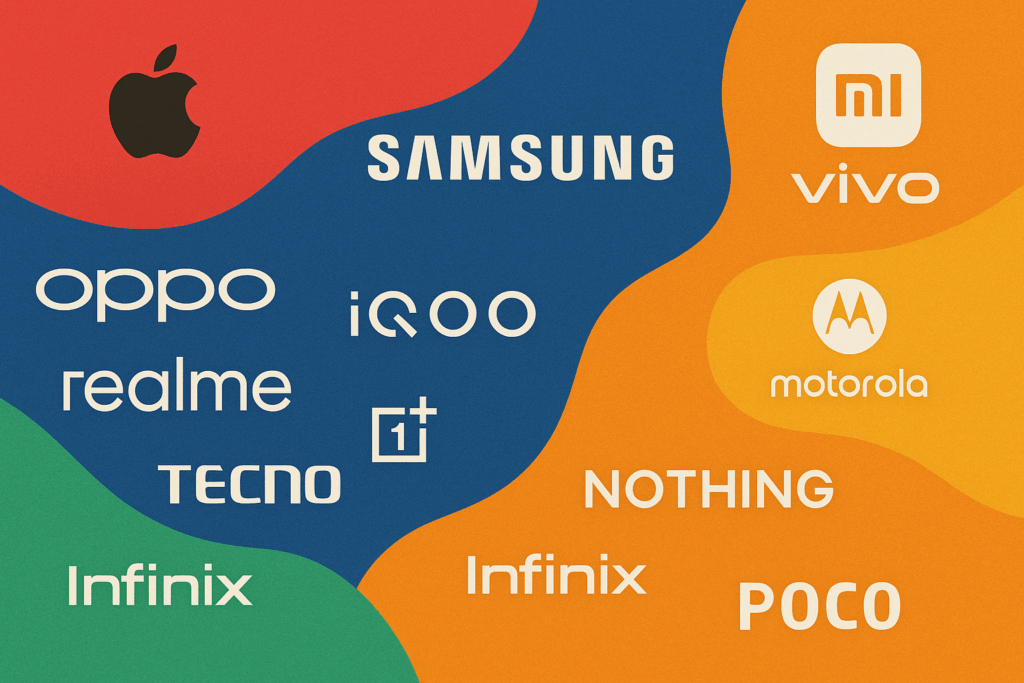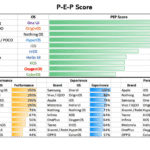
The Indian smartphone market in 2024 exhibited strategic recalibration across price bands. Some brands moved away from volume-focused budget offerings and concentrated on high-conversion mid-range and premium segments. With over 200 launches mapped across 16 brands, Techarc identified few patterns in portfolio distribution, brand positioning, and category evolution.
Mid-Range Is the Most Crowded Segment

The Rs 15,000- Rs 30,000 price band witnessed the highest concentration of activity throughout the year. This zone, which was previously considered mid-range, has now become the mainstream purchase bracket for most Indian consumers. It balances aspirations with affordability, and buyers here are no longer content with basic functionality. They expect high refresh rate AMOLED displays, reliable 5G connectivity, fast charging, and competitive performance. Brands such as Vivo, Realme, Redmi, iQOO, Infinix, and Motorola directed much of their 2024 energy toward this band. Realme, for instance, launched all ten of its devices in this bracket, while Vivo alone had over thirteen models targeted at this audience.
Budget Segment Is Shrinking
In contrast, the sub-Rs10,000 segment, once the backbone of the Indian smartphone market, saw minimal activity from tier-1 brands. The few consistent players left are Itel, Lava, Infinix, and occasionally Redmi. Brands like Samsung, Motorola, and Realme dipped in with only one or two devices, treating this segment more like a checkbox than a core focus. This points to a broader trend of disengagement from a price tier that is increasingly difficult to serve profitably.
Premium and Ultra-Premium Is Heating Up

Interestingly, the premium segment above Rs 1 lakh gained momentum in 2024, not necessarily for volumes, but for perception. Brands like Google, Samsung, OnePlus, Vivo, and Motorola each had at least one high-end flagship or foldable device. These launches aren’t about unit sales but they serve as brand statements. Foldables in particular became a symbolic category, used to signal innovation, leadership, and future readiness.
Vivo and Motorola Launched the Widest Range

Among all brands, Vivo stood out for its aggressive portfolio depth. It launched a staggering 33 smartphones in 2024, ranging from budget-friendly Y-series devices around Rs 7,000 to the ultra-premium X Fold 3 Pro priced at Rs 1.6 lakh. This gave Vivo a presence in every conceivable price tier, essentially making it the most widely-spread brand across the market.

Motorola, while quieter in volume, played perhaps the most balanced game. It launched across every key tier, from the affordable G24 Power to the high-end Razr 50 Ultra foldable. The Edge series filled the mid-premium vacuum with devices offering stock Android, reliable software support, and distinct design touches like Pantone-certified colors. Motorola managed to avoid oversaturation while still maintaining presence across the board.
Realme and Redmi

Realme and Redmi took divergent paths. Realme stayed laser-focused on its core strength: affordable performance phones under Rs 30,000. Its entire 2024 portfolio lived in that space. Redmi, while still dominant in the budget category, began testing the waters in higher segments through its Note Pro+ models that climbed into the Rs 30,000–Rs 50,000 bracket. It was a subtle move toward expanding its perception without losing its budget base.
HMD, Itel, and Lava Play Conservative But Steady
Brands like HMD, Itel, and Lava remained committed to the entry-level and sub-Rs 20,000 market. Their approach was conservative but consistent, largely oriented around offline retail and rural distribution. They made no attempt to compete with tier-1 brands in higher brackets, focusing instead on first-time smartphone buyers and cost-conscious upgraders.
The Mid-Premium Gap
One notable shift in 2024 was the closing of the mid-premium gap. The Rs 30,000–Rs 50,000 segment, long underserved, finally saw momentum with launches from Motorola, Vivo, Honor, iQOO, Oppo and Xiaomi. These phones offered nearly-flagship experiences in terms of camera, design, and performance, but without breaching the psychologically sensitive Rs 50,000 mark. It became an attractive landing zone for buyers who didn’t want to compromise, but also didn’t want to overspend.
Timing also became a crucial strategic lever. September emerged as the peak launch month across the industry. Most brands scheduled major releases ahead of India’s festive shopping season, aiming to capture the Diwali and Dussehra demand cycle. Go-to-market strategies have become more synchronized with calendar-based retail patterns than ever before.
Another curious observation was the overuse of the term “Pro.” Once reserved for high-end variants, it is now liberally applied across tiers, from Rs 12,000 phones to Rs 1.5L foldables. The label has lost its clarity and no longer guarantees flagship-class features. This overextension could eventually dilute consumer trust in branding nomenclature.
2024 was less about who launched the most phones and more about how effectively each brand mapped their offerings across India’s complex pricing landscape. Vivo and Motorola showed how broad coverage and balance can coexist. Realme defended its volume turf. Redmi experimented upwards. And foldables finally moved from concept to catalog.





